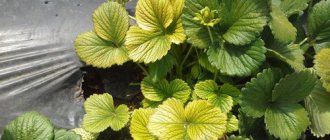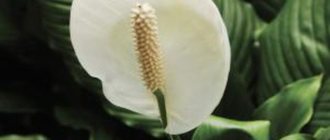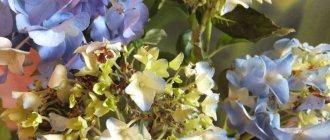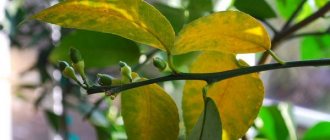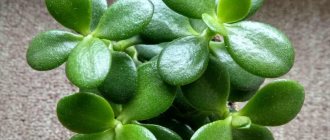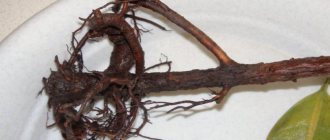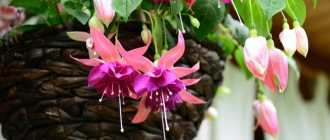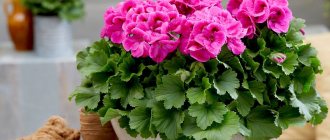Description and structure of the plant
Cyclamen is a herbaceous perennial plant with a hard, thickened root. The leaves of the plant are round or heart-shaped, dark green in color with interesting silver or white patterns.
The petals of flowers are bent back and can have a very diverse color. Cyclamens bloom from October to March with crimson red, pink and white, purple buds. The lifespan of one flower is about ten days.
Important! Cyclamen is a poisonous plant. Its tubers contain a substance that can cause irritation or inflammation of the skin.
What kind of plant is this?
The genus Cyclamen or Alpine violet from the Myrsinaceae family , sometimes attributed to the Primulaceae family and includes about 20 species. In fact, the correct name of the plant involves stress on the first syllable - cyclamen, and the generally accepted pronunciation comes to us from the French language.
The genus Cyclamen includes such plant species as perennial herbaceous plants, common in the Mediterranean countries; from Spain in the west to Iran in the east, as well as in Northeast Africa, including Somalia. Cyclamen is a perennial corm plant with beautiful patterned heart-shaped leaves and single flowers on long stalks. The flowers, up to 8 cm in diameter, have five petals and can be white, pink, purple, lilac and even violet.
On a note. Cyclamen leaves grow directly from the root, and pedicels appear from there, making the plant look like a lush bush.
Among the domestic species of cyclamen, there are varieties with green carved leaves , on which an intricate pattern of light green color is visible.
Why leaves turn yellow - all sorts of reasons
Cyclamen leaves periodically turn yellow - this problem is sometimes encountered by plant owners. The cause of yellowing leaves is usually due to improper care and violation of maintenance conditions.
A possible cause of yellowed leaves of a home flower may be:
- Unsuitable temperature. Cyclamen is a cold-loving plant, so it does not tolerate high temperatures. It feels comfortable at temperatures ranging from +14C to +16C.
- Incorrect lighting. Insufficient lighting or direct sunlight on the flower can lead to yellowing of the leaves.
- Errors in watering and humidity levels. Excess or lack of moisture can immediately affect the plant. Cyclamen prefers moist air - too dry indoor air can cause yellowing leaves.
- Feeding errors. Lack or excessive feeding of the plant with fertilizers high in nitrogen can also cause yellowing of cyclamen leaves.
- Rest period. After abundant flowering, the plant prepares for rest and during this period the natural process of wilting begins: the leaves gradually turn yellow and dry out.
- Untimeliness and errors in transplantation. Cyclamen is replanted only before flowering.
A prepared mixture of sand, leaf humus and turf soil is perfect for replanting. The rotten part of the tuber should be removed. On a note. The size of the pot in diameter should not exceed 15 cm. - Pests. Infection of cyclamen with spider mites can also cause yellowing of plant leaves.
- Diseases. If watered incorrectly, water can cause a dangerous fungal disease in the root system - gray rot, which first causes yellowing of the above-ground part of the plant.
From the video you will learn why cyclamen leaves turn yellow in winter:
Why do cyclamen leaves turn yellow and dry?
It is worth consistently considering the possible reasons why cyclamen leaves may turn yellow and determine what exactly the flower may not like. In most cases, the plant’s poor health is caused by unfavorable environmental factors and errors in care.
If the leaves turn yellow, this may indicate that the plant is not being properly cared for.
Improper care as the cause of yellow leaves
Persian and European cyclamens are most often grown at home. The flowering period of these varieties begins at different times: the European one begins to bloom in the warm season, and the Persian one, starting in October.
Exposure to direct sunlight
Yellow spots on cyclamen leaves may also be sunburn. This plant absolutely does not tolerate direct sunlight. It requires bright but diffused lighting, always with protection from the sun at midday. Placing a flower on the east or west windows of the apartment will be optimal.
Lack of sunlight can also cause cyclamen leaves to turn yellow. It should not be placed in shade or partial shade. If there is not enough light, it is recommended to provide the plant with additional lighting using a fluorescent or LED lamp.
Dry air
In nature, cyclamen grows in places with high humidity. In the room with it, you should also not allow the air to dry out excessively, this is especially important in winter when heating appliances are running. If the humidity level is less than 50%, the cyclamen leaves will turn yellow.
Warning! The room where cyclamen grows should not be stuffy. It is necessary to ensure good air circulation, but without drafts. High concentrations of tobacco smoke or carbon monoxide can also cause flower leaves to turn yellow.
In order to maintain optimal humidity for cyclamen in an apartment, you can do this:
- place the pot with it in a wide container filled with peat, expanded clay or small pebbles filled with water;
- Every day, using a spray bottle, spray water into the air around the plant, making sure that the drops do not fall on the tubers, flowers and leaves (otherwise the latter may also turn yellow).
Unsuitable temperature
Cyclamen is a tropical plant that actively develops and blooms in winter. In order for him to feel comfortable, he needs coolness.
Ideal temperature conditions for keeping cyclamen:
- in summer no higher than + 18-23 °C;
- in winter no more than + 12-17 °C.
If cyclamen is kept in too hot a room during flowering, its leaves will turn yellow and fall off, and the flowers will wither. Prolonged exposure of a plant to an air temperature that is 4-5 °C above normal will quickly lead to its death.
Important! It is strictly forbidden to place heating devices near cyclamen. It is best to keep it in an unheated room in winter, ideally on an insulated glazed balcony or veranda.
Rules for optimal watering
Cyclamen love moisture. The tubers produce many sprouts, which form delicate buds during the flowering period. What to do to prevent the leaves from turning yellow and how to water them correctly:
- Water temperature is room temperature.
- Regular and moderate watering.
- Water should not get on the leaves and tubers.
- The Persian variety is watered from above, the European variety - closer to the edge of the pot.
- Using settled water.
- Frequency: on slightly dried soil.
- After watering, the water from the pan must be drained.
With excessive watering, the roots rot and mites attack; with insufficient watering, the leaves turn yellow and curl. What to do if the soil is too wet? Transplant the cyclamen into a new substrate (sand, peat, humus and leaf soil in a ratio of 1:1:1:3). It is advisable to replace the pot.
When the roots rot, the plant needs to be replanted
Why can’t you wait until the soil is completely dry before watering the plant again? Because this leads to the loss of turgor (elasticity and greenness) in the leaves. The soil should only dry out slightly between watering procedures. During the period of growth and flowering, fertilizing should be done with a half dose diluted with water for irrigation. If you don’t know what to do to prevent the leaves from turning yellow in the future, provide the cyclamen with enough fertilizer.
Incorrect feeding
It happens that cyclamen leaves turn yellow due to the wrong choice of fertilizers or errors when applying them to the soil. Regular feeding is essential for the development and beautiful flowering of the plant. But you should remember that:
- phosphorus-potassium compounds should be applied to the soil under cyclamen no more than 2 times a month;
- excess fertilizers with a high nitrogen content can reduce the plant’s immunity and cause tuber swelling;
- there is no need to feed the flower during the dormant period.
Errors during transplantation
The most common mistakes made when replanting cyclamen, as a result of which its leaves can turn yellow:
- the timing is wrong;
- incorrect soil composition;
- the transplant procedure was performed incorrectly;
- The size and depth of the pot are incorrectly selected.
It is recommended to replant adult cyclamen once every 2-3 years. It is best to perform this action approximately at the end of summer, when the dormant period ends and young leaves begin to appear on the plant.
The optimal soil mixture for cyclamen consists of equal parts:
- humus;
- leaf soil;
- peat;
- sand.
Important! Soil acidity should be in the range of 5.0-6.3. If the value is above the upper limit of normal, cyclamen will experience a lack of iron, which will manifest itself in the form of chlorosis (yellow spots on the leaves).
The flowerpot should not be too large. The optimal container diameter for an adult cyclamen is 12-14 cm. When replanting a flower, you should be very careful about burying its tuber in the soil: for Persian cyclamen it should be half immersed in the soil, for other species it should be completely immersed.
This is interesting: What flowers must be in the house - house flowers in pots
Pests
Changes in the color and shape of greenery are most often caused by the appearance of pests on the plant. There are three types of parasites:
- Thrips;
- Cyclamen mite;
- Aphid.
Cyclamen in the wild
Thrips are flying insects, if they are not eliminated in time, they can scatter throughout the grower’s entire collection. Cyclamen infected with thrips develops silvery trails left by the winged creatures.
The pet begins to wither, spots appear on the flowers. Greens take on a faded brown tint or lose color altogether. To add insult to injury, plant pests produce a sticky consistency.
Treatment measures: use of trap tapes that attract insects. Frequent spraying with chemicals, as well as air irrigation near the pot.
The cyclamen mite focuses its stay on the lower tender sides of young shoots. When there is a large accumulation, it looks like a coating of dust. When mites occur, the buds fall off, the stems twist, and the edges of the leaves curl.
Treatment measures: complete removal of damaged parts. Spraying with a pest control agent and irrigating with an infusion of soap and ash.
Aphids prefer young shoots and buds. When aphids attack, the leaves are wrapped in tubes, and the bush is covered with sticky mucus. The inflorescences stop blooming, and the greenery loses its color. Sooty fungus may be present. Fight aphids with cotton pads soaked in a chemical, spray and rinse with a direct stream of water.
Thrips
These insects have a very small size, an oblong body and wings. It is difficult to notice them, since thrips are located on the underside of the leaf. Pests feed on plant sap, and rot appears in the affected areas over time.
Thrips are very small and move quickly, so controlling them can be quite challenging.
Among the signs indicating their presence is light yellow pollen falling from the flowers onto the leaves. The leaves themselves darken at the edges, fewer and fewer flowers appear, and small holes can be seen on their petals.
Insecticides will help get rid of thrips. You can use the drug “Actellik”, the solution of which is sprayed on the flower and covered with a plastic bag for a day. This will help keep pests off the plant. The treatment should be repeated after a week to consolidate the result.
Shchitovka
This pest, like thrips, feeds on plant sap. Outwardly, it resembles a wax speck. The insect is resistant to insecticides, since its body is securely covered with a dense shell. In addition to yellowing of the leaves, it can be identified by a sticky secretion on the plant.
These insects are removed from the flower exclusively by hand, after the affected plant has been moved away from others. You need to use a regular toothbrush, dipping it in a soapy solution. Repeated treatment after a week is required.
Ticks
The cyclamen mite in appearance resembles a small spider; it can be easily seen on the plant upon physical examination. They usually hide among the foliage because they don't like light. The appearance of the pest is promoted by too low humidity in the room.
The manifestation of a mite is similar to an aphid invasion, with the only difference being that the aphids are larger and more noticeable on the plant. The leaves curl at the edges, lose their color, and spots appear on them. The buds stop opening, and spots also appear on the flowers themselves and they change their shape.
To cure cyclamen, first of all it should be isolated from other plants. After this, the flower is sprayed with acaricide. Treatment alone will not be enough, since mites actively lay eggs, which are not affected by medications. You need to spray cyclamen 3-4 times with a break of 4-5 days. Particular attention should be paid to the crown. If you maintain normal humidity in the room, ticks will not appear.
Aphid
This is a small insect that is greenish, brown or black in color. They are located on the bottom of the leaves of the selected plant. Aphids are easy to spot with the naked eye. Their appearance is characterized by the formation of a sticky coating on the leaves, which contributes to the development of fungal diseases; the leaves curl at the edges, lose their color and wither.
To cure cyclamen, you must first treat its leaves with a soap solution. When fungus appears, infected elements must be removed. The drug "Malathion" has a good effect on aphids; it has a wide spectrum of action and is effective against many pests. However, such compositions can discolor the leaves, so they should be used only if the use of a soap solution does not produce results.
Diseases
Cyclamen leaves may turn yellow and fall off due to disease. This symptom is inherent in several types of diseases:
| Disease | Signs of defeat | Control measures |
| Fusarium (dry rot) | The leaves gradually turn yellow, wither and dry out, starting from the top of the plant. The plexuses of blood vessels inside the tuber begin to rot. It is characteristic that the lesion can be noticeable only on one side of the cyclamen. | Flower isolation. Spraying with “Topsin-M”. Watering under the root with “Fundazol”. It is best to transplant cyclamen into new, calcined soil. |
| Anthracnose | This fungus attacks cyclamen when there is high humidity and too high a temperature. Flower arrows appear crooked, quickly begin to turn yellow, and the buds never open. Young leaves become deformed, old leaves turn yellow and die. | Plant isolation. Removal of affected organs. 3-4 times treatment with fungicides (with a break of 5-7 days). Normalization of humidity and reduction of temperature in the room. |
| Gray rot | A silvery coating appears on the shoots and leaves. Cyclamen stems become watery, darken and die, and the leaves turn yellow and fall off. | Plant isolation. Removal of diseased organs. Treatment with fungicides (“Euparen”, “Ronilan”, “Marshal”, “Skorom”, “Chistotsvet”). Regular ventilation of the room. Reduce watering, completely stop spraying. |
| Wet rot | Flowers and leaves suddenly turn yellow and wither. The tuber emits an unpleasant, putrid odor. | There is no treatment. It is recommended to destroy diseased cyclamen. For prevention purposes, the damaged areas should be treated with an antiseptic, the plant should be watered with clean water, and planted in calcined soil. |
| Leaf bronzing virus | The leaves become deformed, then turn yellow and die. At the initial stage of the disease, you can notice a brown pattern on them, reminiscent of the color of oak leaves. | There is no treatment. It is recommended to destroy diseased cyclamen. |
| Ring mosaic virus | Round yellowish spots, similar to fingerprints, appear on the leaf blades. The leaves crack, quickly wither and die. |
This is interesting: Examples of caring for Rowley's ragwort and the main varieties of flowers
What to do if leaves and flowers have withered - detailed instructions:
- To prevent diseases from overpowering the plant, regular soil sterilization will help.
- Periodically water the soil with a weak manganese solution. It will eliminate bacteria and fungi common in the soil.
- Don't overdo it with nitrogen-containing fertilizers. If there is an excess of this substance in the soil, the plant’s immunity will become too weak, and the flower will be very susceptible to any kind of infection.
- Excess moisture and low temperature in the room contribute to the withering of cyclamen. Therefore, you should fight these shortcomings, otherwise you risk losing your flower. More information on how to save flooded cyclamen can be found here.
- Rot, as has already been found out, appears on leaves due to various diseases. IMPORTANT! In any circumstances, it is worth treating cyclamen with fungicides. These may be its analogues - Ridomil, Previkur, Fundazol, etc.
Fusarium wilt
Fusarium rot causes rapid wilting. It immediately attacks the roots and moves through the xylem of the plant. It is very specific; certain types of fusarium rot infect only cyclamen. Therefore, pots after flowers that have been exposed to this disease must be disinfected or replaced with new ones.
Conditions for its appearance: very warm air with a temperature of +23–35° C and excessive humidity (75–80%). Rot bacteria may be present in the soil but not appear as long as the soil is dry. The first symptom of fusarium rot is that cyclamen leaves turn yellow and wither.
Remove the plant from the pot and inspect the roots. If you cut the stem or tuber of such a flower, you will see that it is colorless inside. Discoloration is a sign that a flower must be thrown away, just like those that were next to it. Before planting the tuber, use fungicides labeled “Against Fusarium rot.”
Gray rot
Gray mold is caused by the fungus Botrytis, which appears when the center of the plant is over-watered. Additionally, insufficient air circulation creates an optimal environment for the development of the fungus. This type of rot develops at the base of stems and quickly attacks flower buds and leaves. All affected parts should be removed and discarded, and the plant should be moved to a room with better air circulation. If the flower is heavily infected, it is better to throw it away.
Important! Tubers contain various substances, including saponins - plant poisons. They can cause poisoning, so keep cyclamen away from children. The degree of poisoning depends on the amount taken orally.
To improve air circulation, you can install a fan after removing all damaged parts of the cyclamen. Try to avoid getting water on the leaves or crown when watering. Erwinia bacteria are responsible for soft rot. The cyclamen turns yellow, the leaves fade, and the tuber becomes soft. This problem occurs if the tubers are planted too deep and the soil mixture contains a lot of moisture, a lot of heat and a lot of fertilizer. It is also better to throw away the affected plant.
Wood ash can prevent gray rot. But if the plant is severely affected, then fungicides are used. "Fitosporin M" is a natural bifungicide that contains the bacteria Bacillus subtilis. Developing in the soil, they destroy pathogenic microflora, including bacteria that cause gray rot. The drug not only treats, but also improves the condition of the soil and increases the resistance of cyclamen to diseases. If you purchased the drug in liquid form, you do not need to dilute it. Use according to package instructions.
Natural process
You can also observe how cyclamen dries out when the plant is preparing to enter a natural dormant period, which replaces the stage of active growth and flowering. As a rule, Persian cyclamen chooses to rest for 2-3 months in spring or summer, while European varieties usually “fall asleep” in winter.
On the eve of this stage, the plant stops blooming, its leaves begin to turn yellow and wither. Then the green mass partially or completely falls off. Often these signs frighten inexperienced gardeners, who may mistake them for a manifestation of a disease.
The following observations will help determine that cyclamen is healthy and entering a dormant period:
- the leaves turn yellow and fly away not rapidly, but gradually;
- the tuber remains tight and elastic, without signs of spoilage or rotting;
- The room temperature stays above + 20 C for some time.
Caring for the plant at this time involves:
- careful removal of yellowing and dried leaves;
- placing the flowerpot in a cool, shaded place;
- stopping feeding;
- reducing the frequency of watering and the amount of moisture applied to the roots.
Before entering the dormant period, leaves and flowers begin to slowly turn yellow and fly off
Warning! Cyclamen should be brought into a state of activity slowly, after the end of the dormant period and the appearance of the first young leaves. It needs to be gradually accustomed to bright, diffused light, and gradually returned to the normal regime of watering and fertilizing.
The foliage turned yellow during flowering, what should I do?
To solve this problem, you need, first of all, to reconsider the conditions for keeping indoor flowers:
- You need to pay attention to the room temperature, which should not exceed +16°C. If necessary, you need to remove the flower away from heating devices or take it to a colder room.
- You need to pay attention to lighting: cyclamen needs diffused bright light, but direct exposure to sunlight is not desirable.
It is also necessary to control the watering regime and the humidity level in the room. During flowering, cyclamen needs regular, but not too much watering. The procedure for humidifying the air should be repeated several times during the day with a fine spray, under no circumstances getting it on the leaves or open buds.
- If the flower is attacked by pests, then it is necessary to treat it with insecticides: Actellik, Fitoverm. You will learn about all pests and methods of combating them here.
Note! To feed cyclamen, fertilizers with a minimum nitrogen content are required.
What to do if cyclamen turns yellow
If cyclamen leaves turn yellow after purchasing, replanting or moving a flowerpot to a new location, it is necessary to provide the flower with proper care.
Read more Why cyclamen withers after purchase or replanting: what to do
The plant requires:
- cool room temperature (+ 12-17 °C);
- high air humidity;
- bright but diffuse lighting;
- good air circulation without drafts;
- timely moderate watering at the root as the soil in the pot dries out;
- regular application of phosphorus-potassium fertilizers;
- compliance with the correct regime during the rest period.
How to create the most favorable conditions for cyclamen in an apartment so that its leaves do not turn yellow, it grows healthy and blooms profusely:
If the whole flower withers, how to treat it?
If you are late with timely care and the flower begins to wither, turn yellow and lose leaves, then you should immediately begin to resuscitate it. To do this you need:
- First, carefully examine the above-ground part of the flower and remove all dry, inanimate, affected parts.
- Treat the cut areas with any disinfectant.
- Then wash the tubers from the soil and, if necessary, carefully remove all questionable parts.
- Treat the tubers with Topaz or another fungicide.
- Then dry the roots and plant the flower in fresh, pre-calcined soil.
- Place in a dark place for several days, remembering to water moderately.
- After a week it can be returned to its normal place.
Read about the reasons why a flower withers and its leaves dry out in this article.
On the pages of our website we will also tell you about why the plant’s leaves curl or flower stalks dry out. Our experts will also give a lot of useful advice on how to save cyclamen from death.
Diseases and pests
Cyclamen is a rather demanding plant. But problems in its appearance may not only be due to improper care. When choosing this plant, be prepared that you will encounter many diseases and pests from which it needs to be protected.
One of the most common is gray rot. With this disease, in addition to the leaves of cyclamen turning yellow, it also develops a gray coating. This plaque is very similar to fluffy mold. It can affect all parts of the plant from stem to flower.
To save cyclamen from this disease, you need to cut off the affected areas and burn them. Be sure to change the soil, because there may be remains of rot in the soil. In this case, a product called a fungicide will also help you.
Until the flower is completely cured, you need to reduce watering, spray it less often, and ventilate the room more often.
Cyclamen leaves also turn yellow due to various insects. Pests are no less dangerous than gray mold. Among them:
- cyclamen mite;
- red spider mite;
- aphid.
The cyclamen mite is a small pest that lives in colonies under leaves. Colonies resemble a layer of dust. Insecticidal soap will help you in the fight against these mites. It is necessary to wipe the leaves of the diseased plant until it recovers completely. If the flower is severely affected, then all that remains is to destroy it so as not to infect other plants.
Red spider mites love hot, dry air and spread incredibly quickly. Therefore, be very vigilant in summer. If you notice that cyclamen leaves turn yellow and along with this a small cobweb appears, then this is a reason to sound the alarm.
To protect the plant from death, you need to treat cyclamen with insecticidal soap, decis and phosbecid preparations. It is also necessary to constantly ventilate the room and regularly inspect the flower.
Aphids are a common pest that is dangerous to many plants. If the cyclomenia flower wilts and the leaves turn yellow, and there are dense clusters of black or green color at the top, then these are probably colonies of aphids. The insect reproduces very quickly, feeds on the sap of the plant and completely eliminates it. Thus, after a short period of time, cyclomenia dries out and dies.
A good remedy against aphids is a soap solution, pyrethrum solution or tobacco infusion. Wash cyclamen with one of these substances every 2 weeks.
Home care
- If the flower was purchased in a store, then it must be replanted.
- Cyclamen cannot be replanted during flowering.
- The flower pot should not be large.
- During flowering, feed weekly with complex mineral fertilizers. Cyclamen does not tolerate a lot of nitrogen fertilizers.
East or west windows are best suited for this indoor flower in summer, and south windows in winter.
- Summer temperatures for this flower range from 18 to 22°C.
- To flower, cyclamen requires a temperature no higher than 16°C.
- Watering should be done moderately; overwatering can be harmful. When watering, do not pour water directly onto the tuber and shoots. Water only along the edge of the pot. An hour after watering, the remaining water must be drained from the pan so that rot does not appear on the roots. Read how to save flooded cyclamen here.
- At the end of flowering, cyclamens are watered less often, and in the summer, when the leaves begin to dry, even less.
Important! Flowers are more afraid of waterlogging than drying out.
Improper care as the cause of yellow leaves
Why do dracaena leaves turn yellow - reasons
Persian and European cyclamens are most often grown at home. The flowering period of these varieties begins at different times: the European one begins to bloom in the warm season, and the Persian one, starting in October.
Temperature
If yellowing of the leaves occurs while maintaining the freshness of the buds, then you should pay attention to the temperature in the room. The optimal temperature for this flower is 12-15 °C. If it drops below 10 °C, the plant may die. However, if the regime has crossed the upper limit, the leaves begin to turn yellow, dry out and fall off. It is recommended to take the flower pot to a cooler room and away from the central heating radiators.
Flowering cyclamen leaves turn yellow most often due to the temperature in the room
Humidity and lighting
Compliance with the conditions will allow you to grow a beautiful flower. To do this, humidity must be within 50%. If it rises to 80%, then there is a risk of infection with cyclamen mites, and if it is low, it leads to the appearance of red spider mites. You can save the plant in the following way: you need to spray water near it from a small spray bottle, but in such a way that it does not fall on the flower itself. You can increase air humidity using wet expanded clay, which can be poured into the tray of the pot.
Note! The flower should not be in a draft, but it is worth making sure that there is good air circulation in the room with it. In this case, you can place the pot with the plant closer to the wall.
There is enough natural light for the flower. Cyclamen loves soft, diffused light. When the leaves are exposed to direct sunlight, they begin to turn yellow and can get burned. In summer, it is worth keeping the flower on the east side, and in winter, move it to the south.
Watering
Cyclamen loves moist soil, but you should know certain nuances:
- water should be at room temperature;
- it is necessary to water the flower regularly;
- do not allow drops to fall on the tuber and leaves;
- the water should stand for at least 24 hours;
- It is worth watering slightly dried soil;
- It is necessary to drain the water from the pan after watering.
If the soil is always too wet, the roots may begin to rot and mites may develop. However, cyclamen also does not like dry soil and reacts to it by yellowing of the foliage. If it becomes overwatered, it is worth replanting the flower in a new pot.
Damage to cyclamen disease
About cyclamen
This flower can be called one of the most beautiful and popular among indoor plants. Its homeland is the Mediterranean and the Middle East. Cyclamen is compact and picturesque.
It has dark green leaves with a white pattern on them; their edges can be fringed or simply smooth. Flower petals can also be simple or wavy. This is a tuberous plant.
In indoor floriculture, two types of cyclamen are widely used: European and Persian. The most common is Persian.
There are more than 50 varieties of this plant; they include different species.
The height of the plant can vary from 15 to 30 centimeters, depending on the variety. The petals of the opened bud are bent back. The color range of buds is very wide. They can be pristine white, flaming red, soft pink, dark purple... Their color depends on their belonging to one or another variety.
The foliage is usually round or heart-shaped. The surface of the sheet plate is decorated with marble stains, spots or a silver pattern.
